Type 3s are ambitious, industrious, and goal-oriented strivers.
Reading time: 5 minutes

Gregory Park, Ph.D.
Author
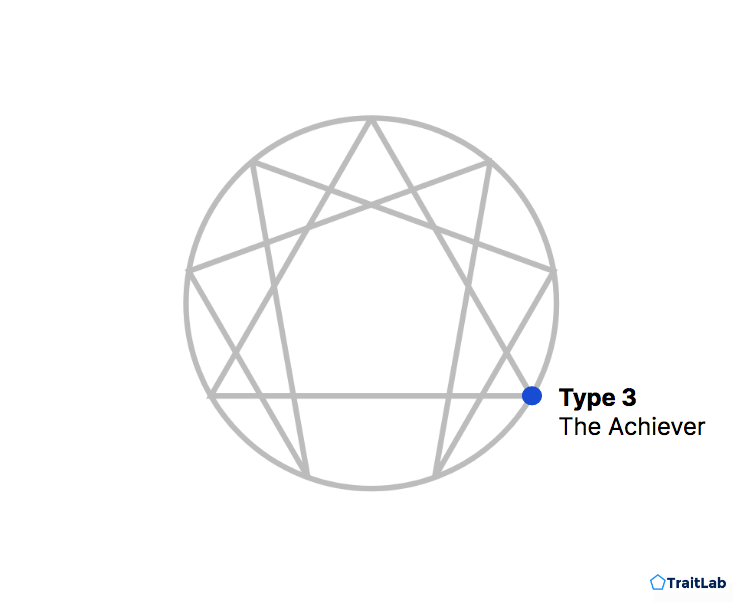
In the Enneagram framework, Type 3s — also known as Achievers or simply Threes — are ambitious, industrious, and highly motivated towards accomplishment in several areas of life.
Hook and colleagues (2021) describe Type 3s’ core desire as a need to succeed. At their worst, Type 3s allow others’ perceptions of them and their success to determine their self-worth.
This negative side emerges as a symptom of Type 3’s core fear of being worthless or without value.

Do you know your closest Enneagram type?
See how your personality compares to all nine types with TraitLab's comprehensive assessment.
Others might describe Type 3s as
The wordcloud below shows the top 100 words used to describe Type 3s. Bigger words describe the more prominent aspects of most Type 3s.
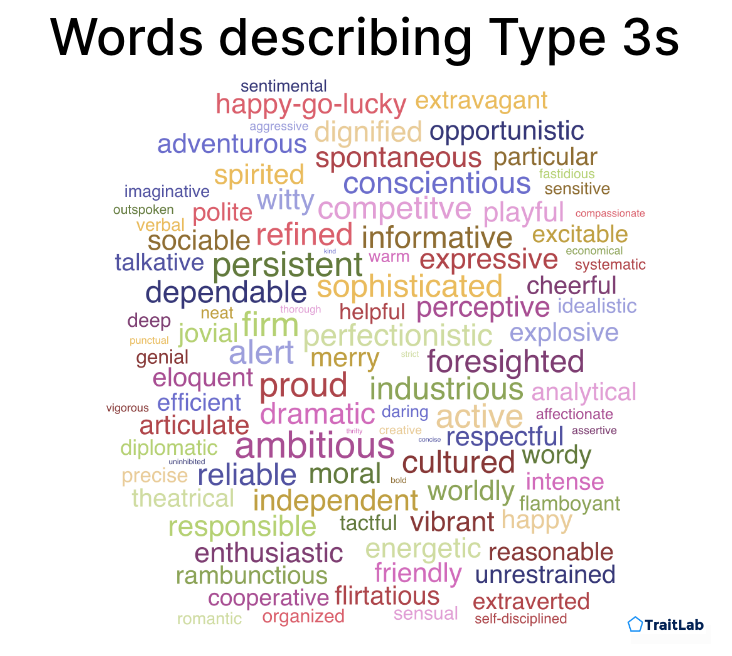
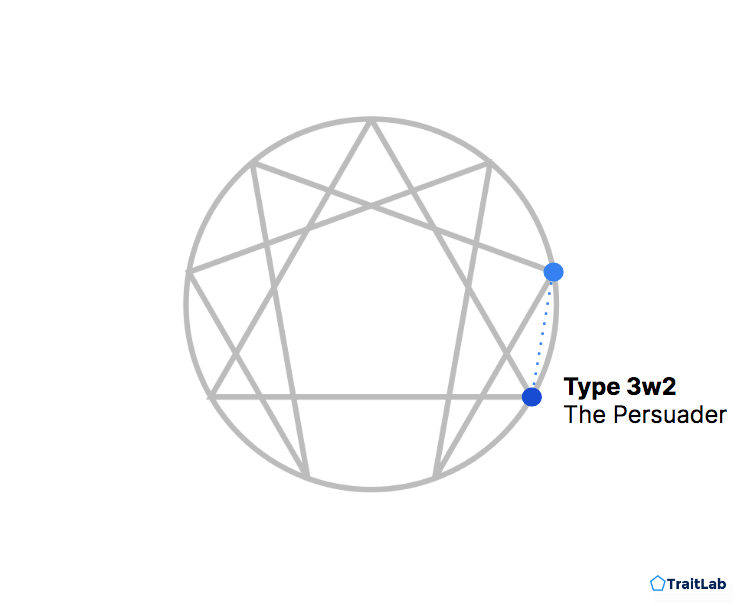
Type 3s with a 2 wing, or 3w2s, take on some characteristics of Type 2: The Helper, including enhanced interpersonal sensitivity and effectiveness. With friendliness, charm, and a drive to succeed, Type 3w2s can often get what they want in social situations.
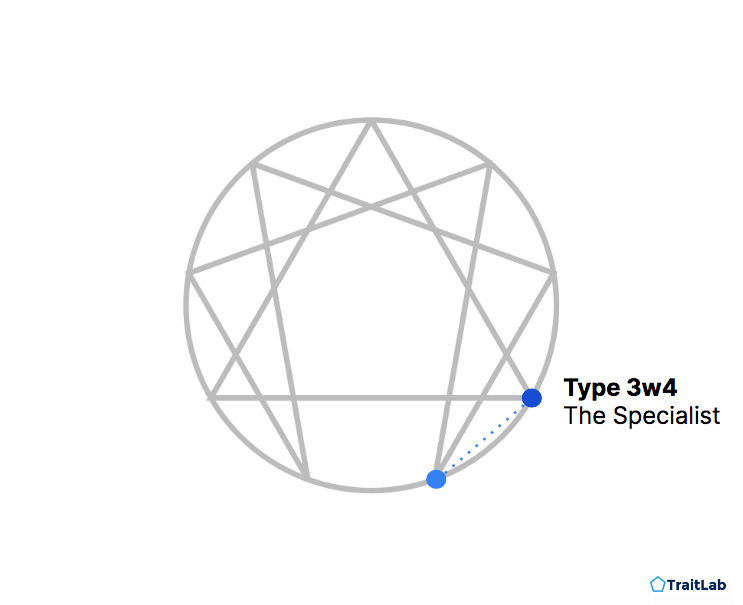
Type 3s with a 4 wing, or 3w4s, exhibit characteristics of Type 4: The Individualist. While Type 3w4s maintain a strong need to achieve, they typically have a much narrower focus. They often concentrate the majority of their energy on single domain or project — e.g., learning a new skill, reaching the next career milestone, etc. This focus usually comes at the cost of close relationships and a richer social life.
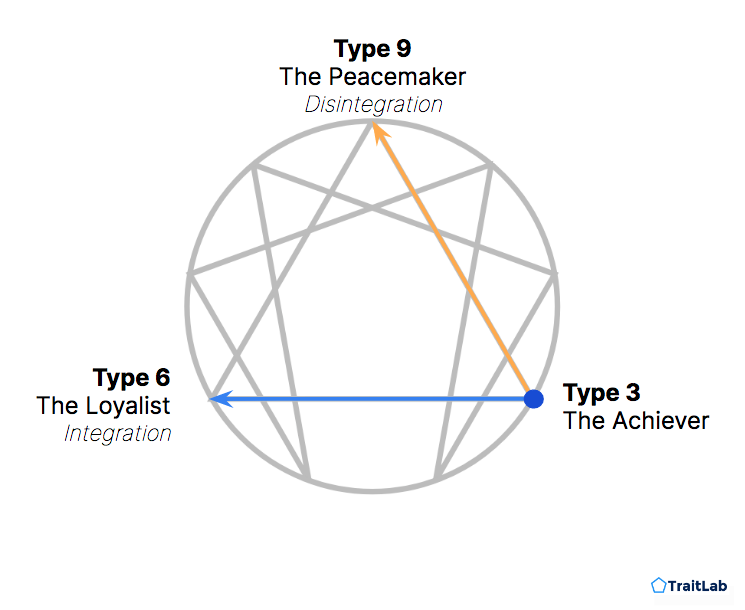
In times of health and security (i.e., integration), Type 3s shift towards Type 6: The Loyalist. One indication of this shift is a relaxation of their intense need for success and validation from others. Healthy 3s appreciate working towards something larger than themselves rather than collecting personal accolades.
In times of stress (i.e., disintegration), Type 3s shift towards Type 9: The Peacemaker. Following this shift, Type 3s have less motivation for personal accomplishments. Disintegrated Type 3s are complacent, rudderless, and show diminished interest in their once-important goals. Setting their goals aside, they become content merely to satisfy others.
Based on their distribution of personality traits, TraitLab estimates that roughly 9% of people would be classified as Type 3s.
In studies of personality structure, researchers often use a trait-based approach to describing the differences between people instead of using personality types. The most well-established method is the Big Five, which describes differences along five broad dimensions:
Personality types are far less precise than getting exact Big Five measurements, but knowing your personality type can give you a rough idea of where you fall on each dimension.
In the graph below, each dot is a Type 3, placed by where they fall on the Big Five dimensions. You can see that Type 3s can vary quite a bit on any single dimension.
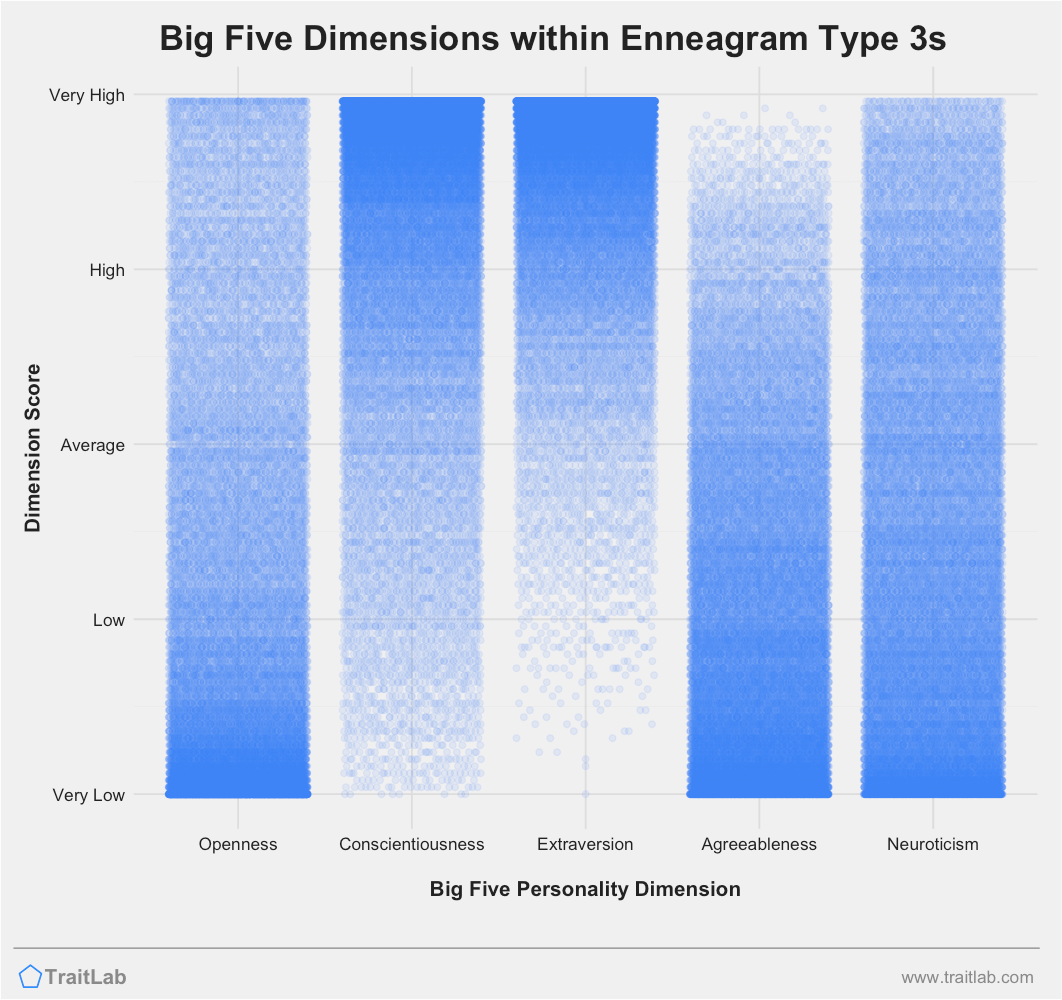
For example, on the Conscientiousness dimension, Type 3s tend to score much higher than average, so the High and Very High areas are very dark blue. However, there are still a few rare Type 3s on the low end of Conscientiousness.
Below, you can see more detail on how Type 3s score on each Big Five dimension.
Type 3s tend to score lower on Openness to Experience, meaning they are often more conventional or traditional. Type 3s usually score below average on this dimension.
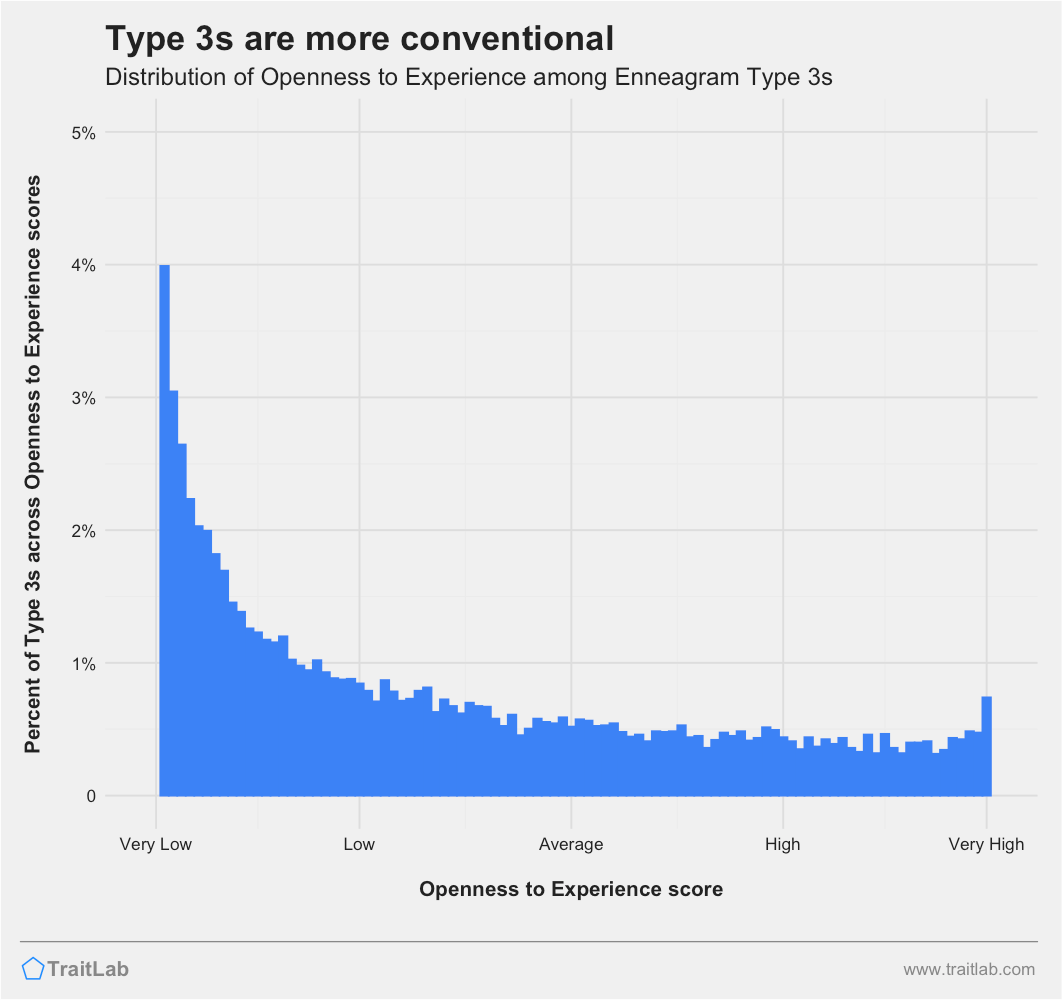
Openness to Experience describes your need for new information, feelings, and experiences.
Less open people prefer familiar ways of doing things. They are less interested in trying new things or seeking out new experiences. They also tend to be less eccentric and have more conventional tastes in hobbies, music, and reading material.
Highly open people have diverse interests, and they may feel a constant need to learn and try new things.
Type 3s typically score higher on Conscientiousness, with a large portion of Type 3s falling at the highest end of the scale.
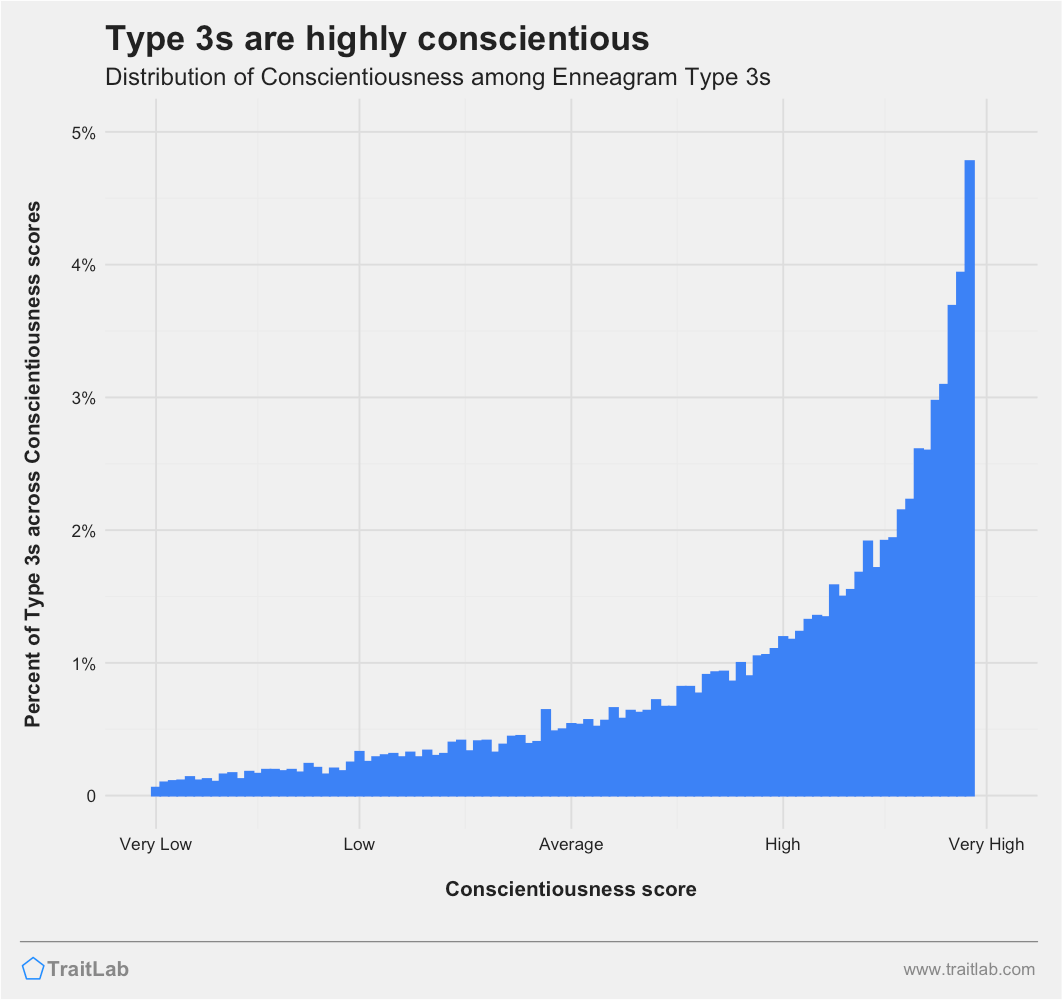
Conscientiousness describes our planning, organization, and regularity. Highly conscientious people, like most Type 3s, tend to create detailed plans to accomplish their goals and stick closely to them. They are less likely to be distracted by diversions or smaller short-term goals, and they excel at maintaining focus on the big picture.
Many Type 3s will have regular schedules and routines to ensure that they can efficiently make progress on multiple goals. They will have little tolerance for disorganization and chaos, and they will work diligently to create order out of a messy situation.
Most Type 3s are generally very extraverted. Extraversion describes our social enthusiasm, positive emotionality, and assertiveness.
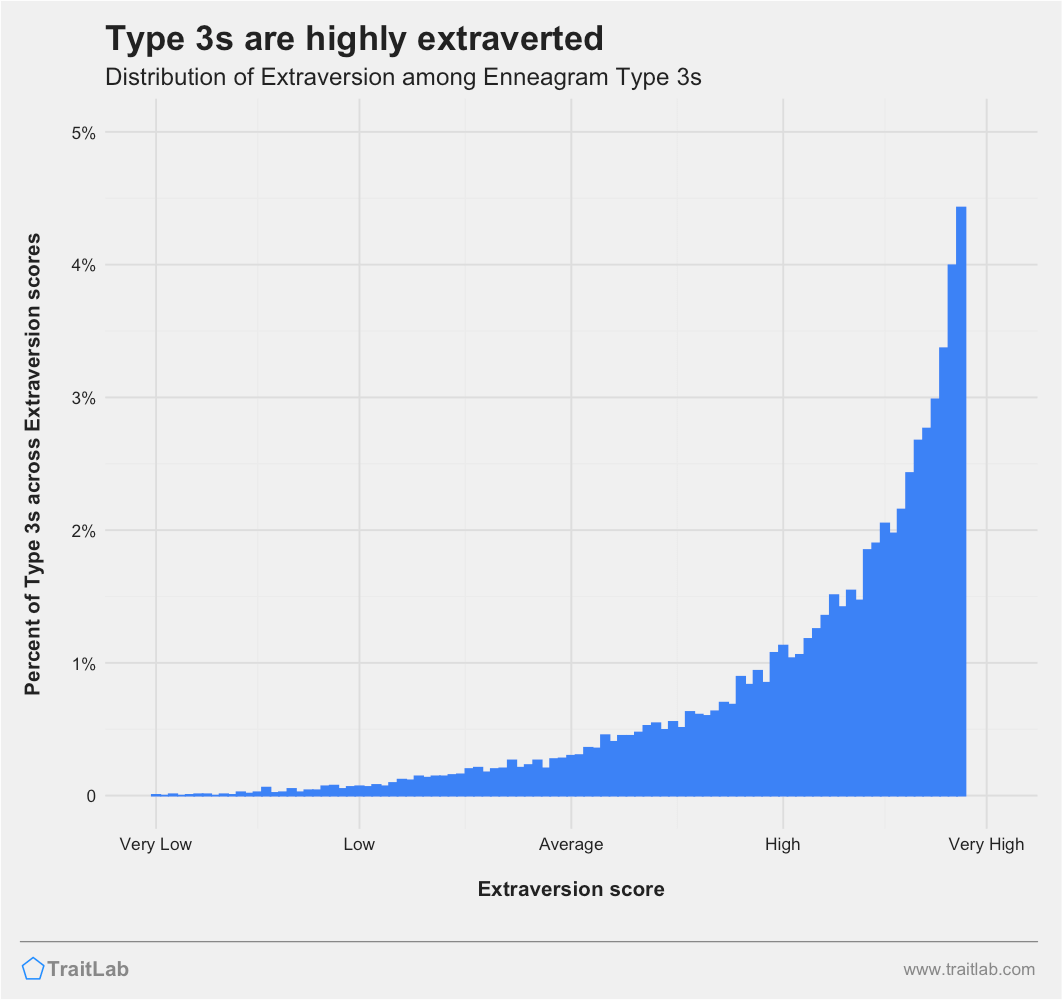
More extraverted Type 3s will naturally gravitate towards social engagement and generally show greater enthusiasm in social situations — smiling, laughing, and keeping the energy up and moving. They will be more likely to open up, share their point of view, and gently persuade others to see things their way.
The rarer, more introverted Type 3s will seem more emotionally muted and reserved compared to their extraverted counterparts. They will act and react more subtly in social situations, and they will occasionally need to withdraw into solitary activities. They are more likely to sit back and listen, and act more passively around others.
Type 3s often score lower on Agreeableness and are more demanding.
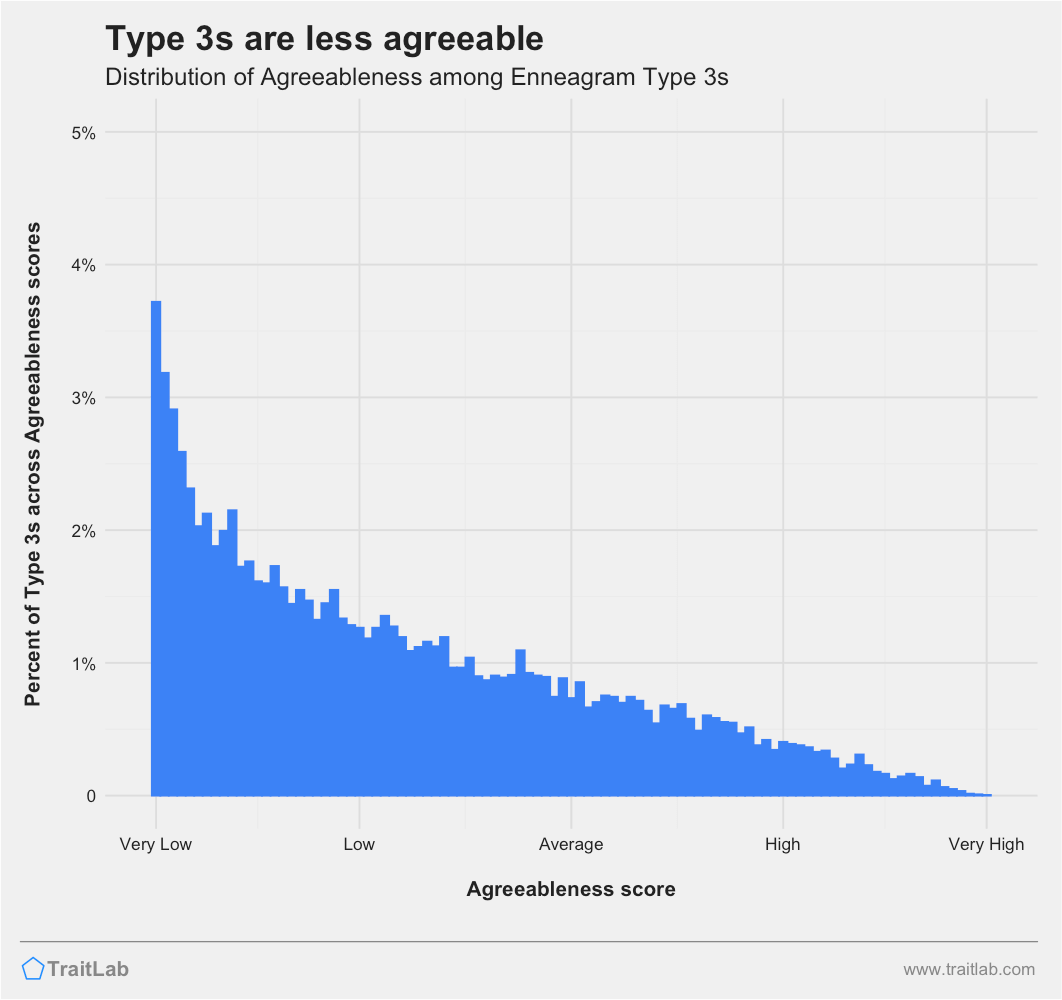
Agreeableness describes your interpersonal warmth, politeness, and empathy.
Like many Type 3, less agreeable (or more demanding) people are often less concerned with others when pursuing their own goals. They are more willing to create conflict or express disagreement across most situations and feel less discomfort during interpersonal disputes.
Highly agreeable people feel a deep need to maintain warm, friendly relationships and are naturally more hesitant to impose their will on others. They will be more considerate of how their actions impact others and try to reduce or resolve interpersonal conflicts when they arise.
While Type 3s also vary in their level of Neuroticism, most Type 3s fall on the lower, more emotionally stable end of the Neuroticism spectrum.
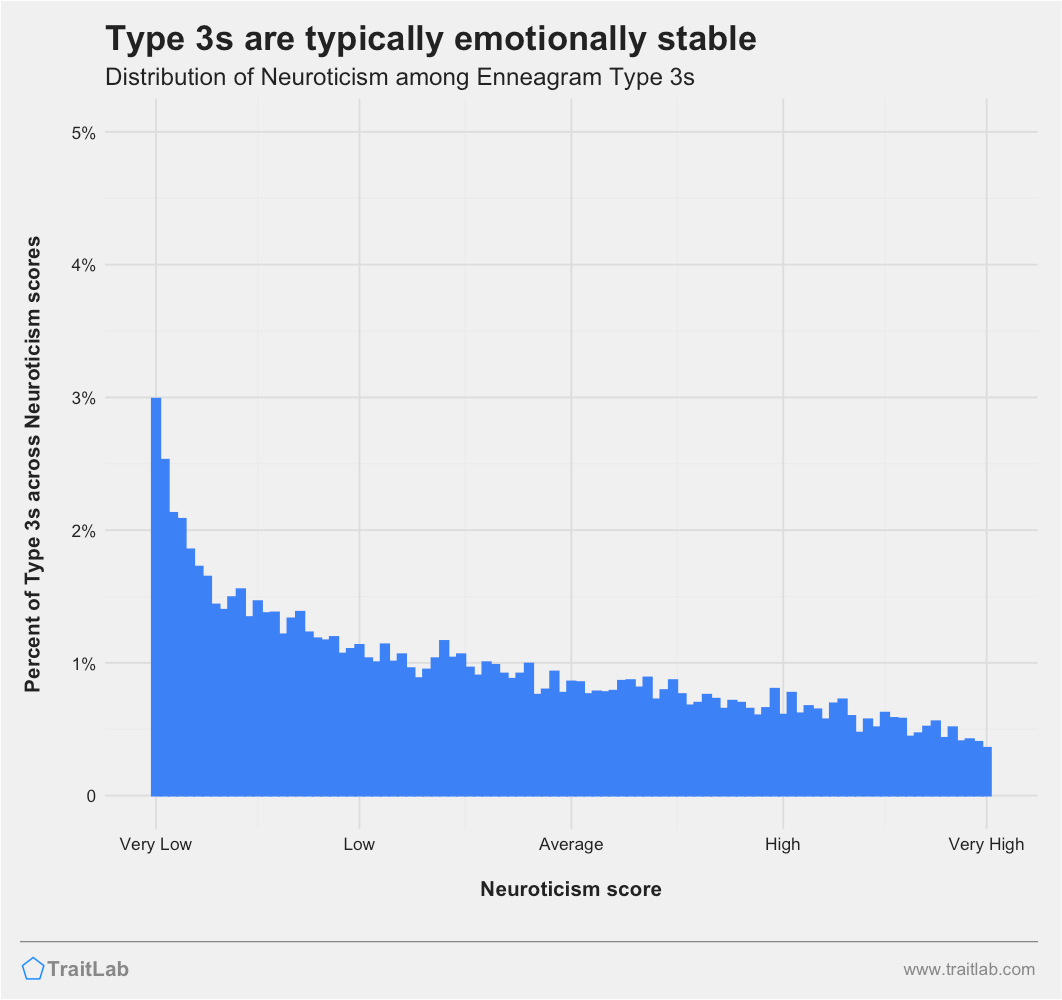
Neuroticism describes our emotional volatility and variability. It is closely tied to our tendency to experience negative emotions: anxiety, anger, distress, and depression.
Low Neuroticism, or high Emotional Stability, is related to an overall decreased reactivity to stress, fewer and less intense experiences of negative emotions like anxiety and anger, and a more relaxed and easy-going temperament.
High Neuroticism is related to more frequent and dramatic mood swings and a general tendency to worry more often. More neurotic people are more irritable, have a shorter temper, and are more likely to dwell on negative experiences.
Most personalities can’t be described perfectly by a single Enneagram type.
However, with TraitLab’s Enneagram test, you can see which of the nine Enneagram types is most similar to your personality.
For comparisons between Type 3s and other Enneagram types, visit any of the type pairings below: